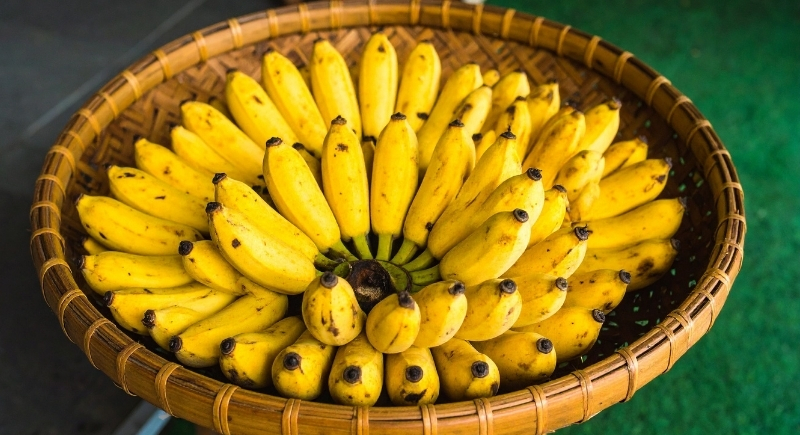Why the Bananas You Eat Today Are Completely Different Than the Ones Your Grandparents Ate
Bananas may look the same, but small differences in their appearances hide a fascinating history. In fact, the bananas most people eat today are different from what your grandparents knew.
Up until the 1960s, the Gros Michel banana dominated diets in the United States. Then disaster struck when a soil fungus devastated plantations and left growers searching for alternatives. The search brought us the Cavendish, now the world’s standard banana, but one with very different qualities.
Gros Michel Was the First American Banana

Image via Getty Images/Amphawan Chanunpha
The Gros Michel banana, nicknamed “Big Mike,” became the dominant export in the late 19th century. Large fruit corporations such as United Fruit and Dole shipped it by the millions into American ports. Unlike today’s Cavendish, the earlier variety carried a much sweeter taste and a denser, creamier texture.
Its thicker peel protected it during shipping while keeping the fruit intact after long voyages. The variety also performed better in cooking, as it remained firm when baked or caramelized. Recipes for banana pudding and banana cream pie written before 1960 were designed with Gros Michel in mind, and the flavor was so distinctive that chemists modeled early artificial banana flavor on it.
Panama Disease Destroyed the Gros Michel
The collapse of Big Mike’s production began with Panama disease, a fungal infection that spread rapidly through plantations. The problem was tied to the way bananas were grown. Farmers relied on monocropping, which means planting vast areas with genetically identical banana trees. Gros Michel had sterile seeds, so each new tree came from cuttings of the same genetic material.
Once the fungus infected one plant, every tree nearby became vulnerable. By the mid-20th century, plantations across Central America were failing, and growers abandoned huge tracts of land. The losses were so severe that the banana industry faced potential collapse.
The disease left companies with little choice but to replace Gros Michel with a different variety. By 1960, the banana that once defined American desserts was gone from supermarkets.
The Cavendish Became the Replacement

Image via Canva/Truecreatives
Though the Cavendish banana was not new, it had always been overlooked in favor of Gros Michel. When Panama disease made the original commercial banana nearly impossible to grow, the Cavendish offered a solution. This is because it carried resistance to the particular strain of fungus that wiped out Gros Michel and could be cultivated at scale.
Growers began exporting it in the 1950s, and by the 1960s, Cavendish had replaced Gros Michel on grocery shelves. The switch worked economically, but the fruit was different. Cavendish bananas had a lighter, less fragrant flavor and softened quickly during cooking.
As time passed, this became the new normal. An entire generation grew up knowing only Cavendish as the standard banana, unaware that bananas once tasted sweeter and more complex. Today, Cavendish represents nearly all exported bananas worldwide.